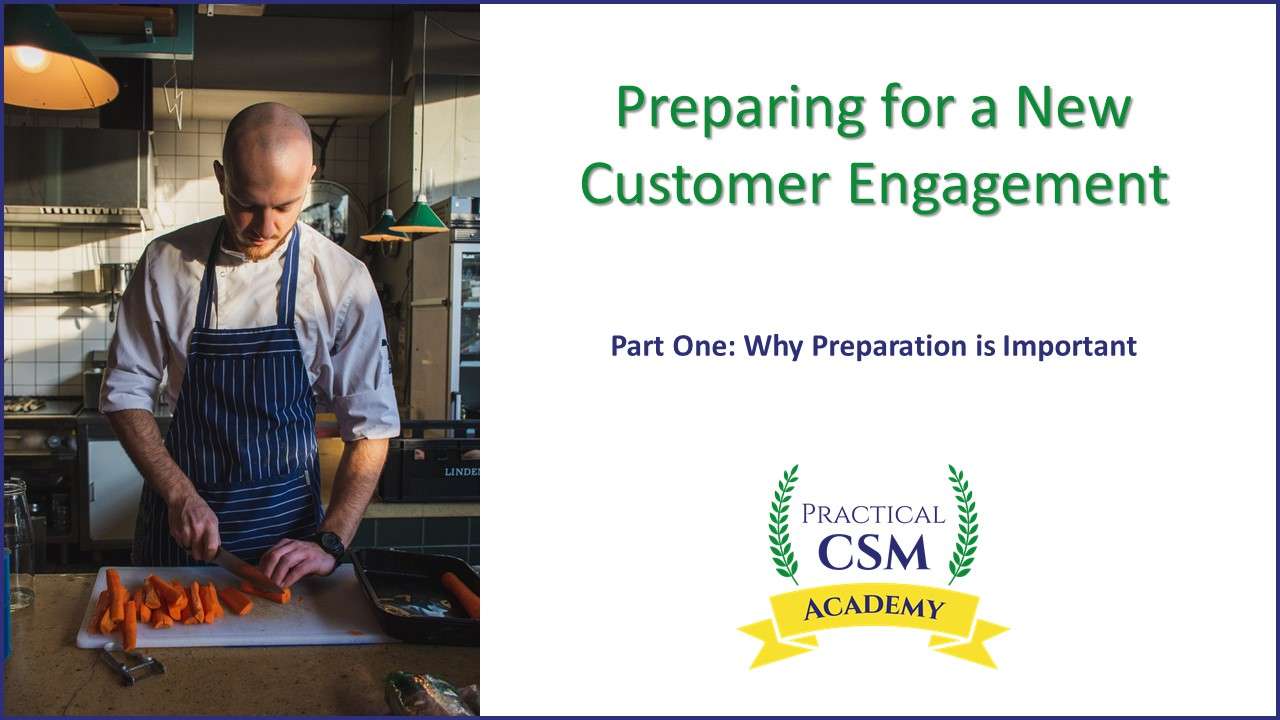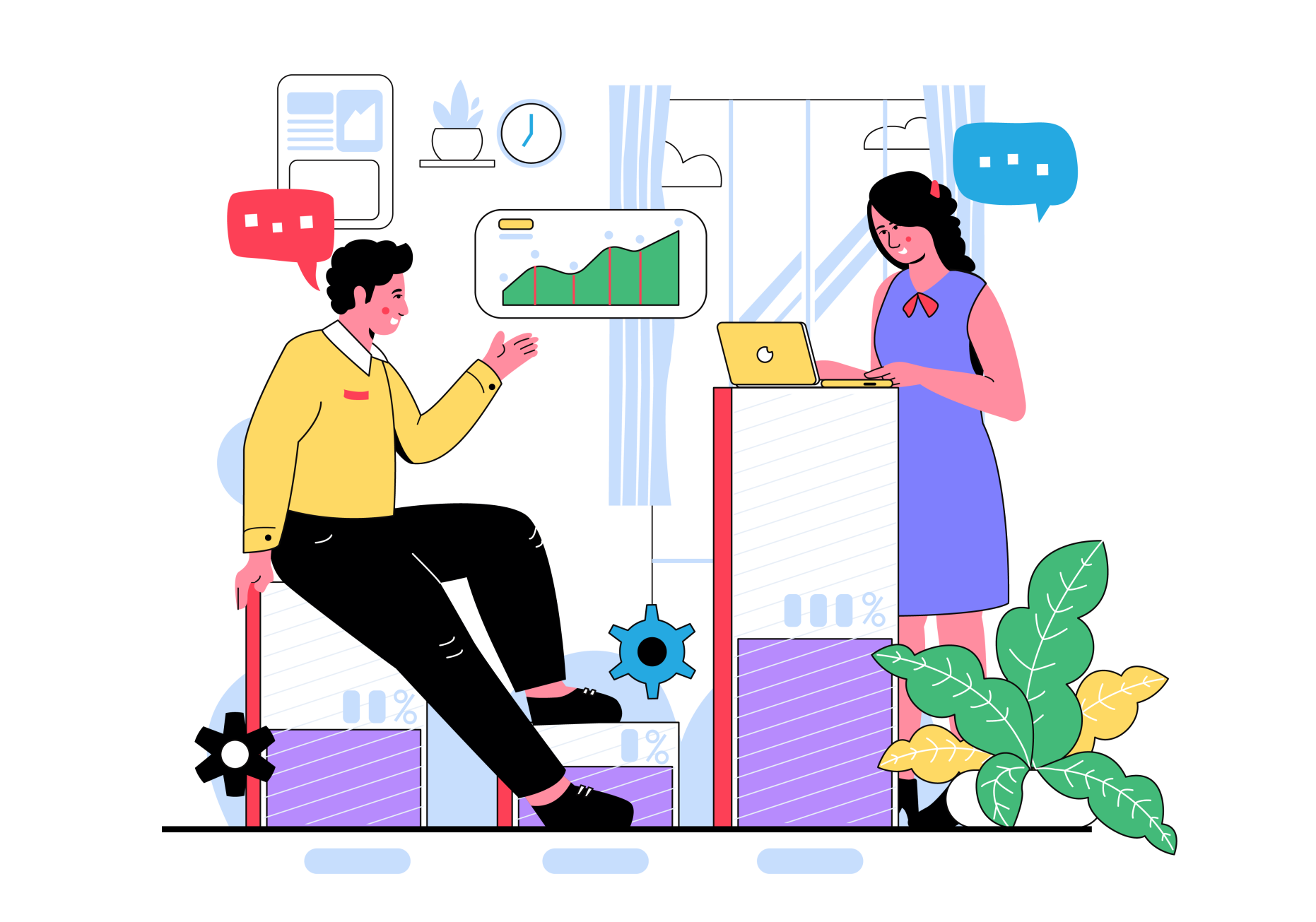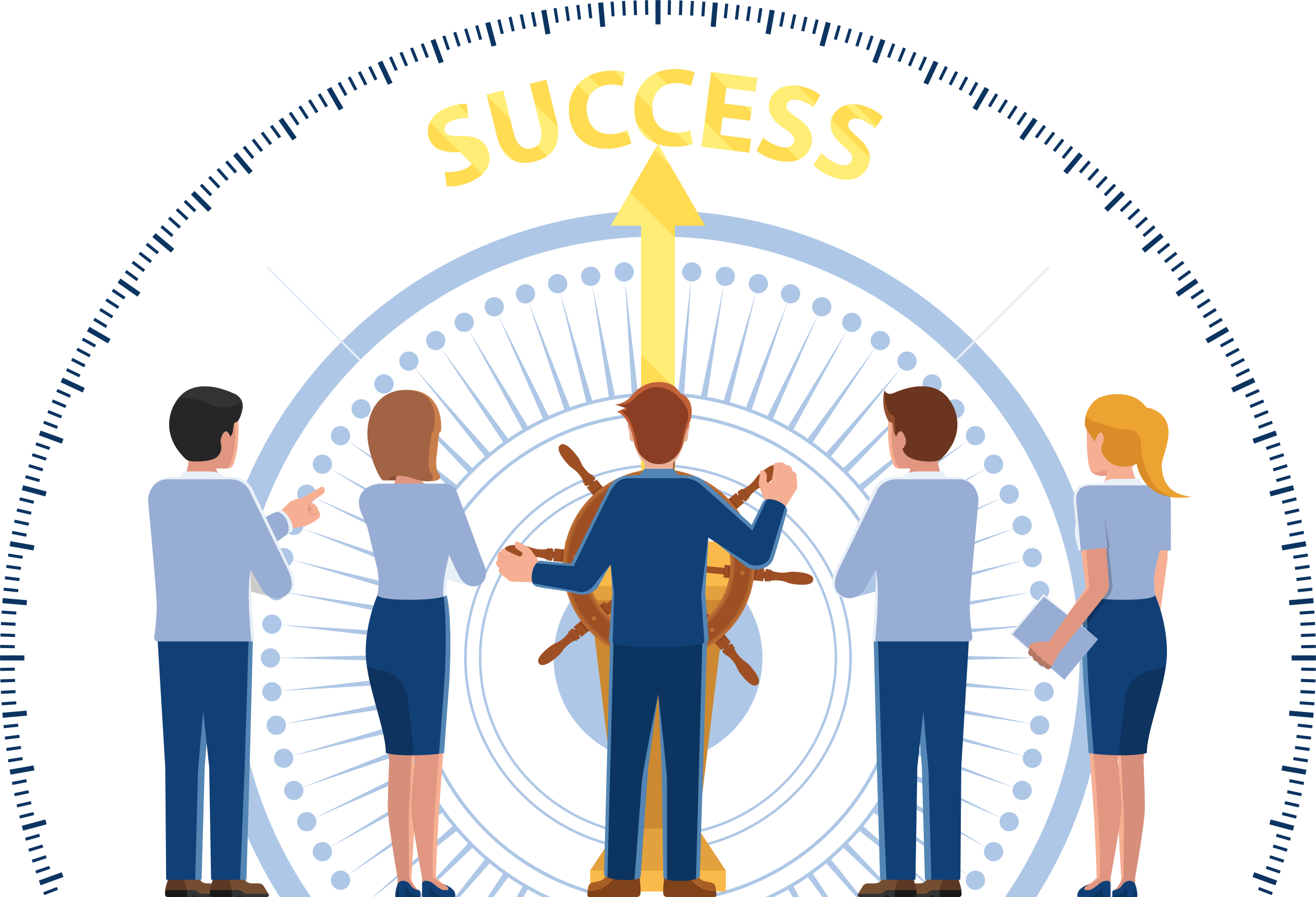Preparing for a New Customer Engagement Part One: Why Preparation is Important
What is Preparation?
The Purpose of Preparation
In this short series of articles we are going to look at what the CSM needs to do in order to prepare for a new customer engagement. Of course every customer and each customer engagement will be somewhat different, but whilst there will be variation in detail between customers and engagements, the process of engaging with customers is likely to remain the same or similar each time. Because of this, the way to prepare for this process of engagement can be reasonably well defined and documented ahead of time.
It is true to say that good preparation will make a big difference to both the quality of the outcomes obtained from the engagement and the efficient use of time and other resources in getting to those outcomes. In this sense a customer engagement is no different from any other project which has at least some level of complexity. Whether you are redecorating the living room, launching a new product, performing heart surgery or helping a customer obtain value from the products, services and solutions they have purchased from you, the secret to a great result lies in good preparation. I would suggest that for every hour you spend in good quality preparation activities you may well save three to five hours of your own and your customer’s efforts further down the line.
Types of Preparation
What types of preparation activities might a CSM look to accomplish when readying themselves for a new customer engagement? The focus of their efforts should be on getting a profound enough understanding of what is going on to become immediately useful to the customer before they start meeting with the customer. To do this they need to spend some time in conversation with those colleagues (and with partners if applicable) who have already been involved in the customer engagement to date, and in reviewing information recorded on corporate systems and tools, and possibly in uncovering additional information from elsewhere as well. They then need to assemble and compile this information into some sort of logical order so they can review and make sense of it. Finally they need to make themselves a plan of action for the, based upon the level of understanding about the engagement that they now have.
A Reminder about Managing Time
One point that is important to emphasize is that the CSM needs to manage their time both within any one customer engagement and between all customer engagements that they are currently working on. In addition and when it comes specifically to the early, preparation phase, the CSM to get ready for engaging with the customer as quickly as possible, so they can begin to add value immediately – although it is also important to make sure that the Customer is also ready to begin their adoption journey – and then to move forwards at a pace which the customer is comfortable with. This concept of readiness might be especially important in the early stages of an engagement, where the customer is often keen to commence adopting and gaining value from their newly acquired products and services as soon as possible. In terms therefore of customer experience, the CSM who is ready to start helping the customer to adopt their products and services immediately upon those products and services becoming ready for the customer’s company to use is likely to be a CSM who is perceived in a more positive light by customer stakeholders. My advice as always is that the CSM needs to carefully tread the line between doing enough preparation to become useful whilst ensuring they do actually start being helpful as soon as possible. Enough preparation then, but not too much. Remember that the best CSMs take an iterative approach to their research, analysis and planning work. Once you have sufficient understanding and have developed a good enough plan of action it’s time to start taking that action. Further research, analysis and planning can still take place in parallel alongside this action as necessary.
Defining the Engagement
Defining the term “Engagement”
A reasonable question to ask at this point might be “what exactly are we preparing for?”. Or to put it another way, what do we mean by the term “customer engagement”? In a sense the answer to this question goes back to a discussion about customer experience.
Let’s take a look at the entire end to end process through the eyes of the customer for a moment. From the customer’s perspective, their engagement with the vendor (or other technology seller) starts at pre-sales with selecting potential vendors, undertaking initial discussions and scoping their requirements. It then proceeds through the process of requirements analysis and solution formulation, then moves through to the proposal stage. In this stage a proposal is formulated and negotiated and possibly a trial of some kind occurs, and ultimately the final contract is agreed. The engagement then moves into a delivery stage where products and services are configured and/or customized as necessary and shipped, installed, integrated and otherwise made ready for use. Now the customer either has the product or has access to the service and needs to make adjustments internally in terms of changing their business processes and training their workforce to prepare them for any changes that will occur. Then they can go live and start using the new products and/or services and supporting their workforce whilst also taking measurements to determine value creation is occurring as desired and where necessary making adjustments to ensure this happens.
The Customer’s Perspective
Looked at from the customer’s perspective they have to make the right purchasing decision, then they have to get the selected solution up and running and finally they have to drive value out of it by using it. For the customer, it’s only at the Value Realization stage that any ROI takes place because this is where all the value creation takes place. Think of it this way: Value Realization is really the only step that matters to customers. If they could get to a satisfactory realization of value without the intervening steps they would of course very happily do so.
The Seller’s Perspective
From the seller’s perspective however, the traditional (ie not X-as-a-service) way of viewing an engagement would look different. For the “traditional” supplier, it is the earlier, sales and implementation related steps that are a means to an end; that end being the closing of the sale and the “delivering of the goods” in order to get paid. All that adopting and using stuff that happens afterwards is an irrelevance since their job is done and now they can move on to selling something else to the next customer. Of course that is not exactly what happens or how the seller thinks, but it can be how it feels for the customer when they get to the end of the implementation phase and experience a distinct falling away of energy and interest from the vendor (or other supplier).
Basic Preparation Concepts
The Value of Post-Sales Customer Engagement
This of course is precisely why customer success management teams are growing in popularity. The customer success team typically gets involved after implementation has occurred and will work closely and intensively with the customer’s stakeholders through the onboarding and adoption stages to make sure that these steps are completed satisfactorily. They then keep in touch throughout the long term value realization phase, but often on a less intensive basis, during which they help with measuring, reporting and making any changes necessary to keep the customer on track in terms of value creation. The earlier steps will typically take place over a period of weeks and/or months. But the value realization phase will typically take place over a much longer period of months or years during which the customer is putting the new products and services to use in order to generate outputs which over the course of time will combine to create the desire final outcome.
The Importance of Smooth Transitions
From the customer’s standpoint what they ideally want is an elegant and transparent transition between each step in order to maximize the quality of the end result and reduce the effort involved in getting there. What they do not want to experience is a lack of communication between different teams or worse still any friction between them as they “hand the customer over” between each step. Neither do they wish to be left hanging without any support and wasting precious time and money whilst the vendor or other sales company gets their act together to provide the relevant people and resources for the next stage. The customer wants a smooth and joined up transition between stages so that they do not experience any frustration through unnecessary waiting or having to re-explain their requirements to a new set of people before those people become useful.
The CSM needs to be aware of this, and should do their best to ensure they are apprised of any customer engagements that are currently in the implementation phase and which they will be the CSM for when the customer is ready for onboarding and adoption to commence. If the CSM knows ahead of time which customers are coming up to this point then they can utilize this time to prepare themselves for their engagement with the customer. In this way when onboarding and adoption finally happens the CSM is already well prepared and able to hit the ground running. No time is wasted, the customer’s frustration level is reduced, their satisfaction level is increased and value is realized that much sooner for all concerned.
Engagement Pace and Cadence
As we stated earlier, from the customer’s standpoint what they ideally want is an elegant transition between each step. Additionally, as the customer moves from pre-sales decision making into post-sales implementation and adoption, they may well have very clear ideas about the pace at which they wish the engagement to move forwards. Some customers may be in a hurry to get to value realization as soon as possible, but others may have various practical considerations around timing such as workforce productivity, availability of key stakeholders, cash flow, requirements of parallel projects, dependencies upon completion of one or more additional initiatives and other concerns that may give rise to the customer’s need to move faster or slower with this initiative at any time. Whilst the CSM can make the general assumption that the sooner value realization occurs the better it will be for all concerned, it is important to understand that this is just an assumption. The CSM should therefore make it their business to discuss engagement timings with the customer to get a feel for what pace the customer needs to move at, and the type of cadence or rhythm of engagement in terms of regularity of reporting, of face-to-face and of telephone or virtual meetings is going to best suit their needs.
You are in it for the Long Haul
Do not forget that for the most part, the journey will be a long one. It may take many years (certainly many months) for customers to even get as far as breaking even on the investment they have made in your products and/or services let alone to realize the types of overall returns on their investment that they would ideally like to see. As their CSM, you will be accompanying them on this journey. What is more, the destination is likely to move further away as you approach it, since the customer will very probably need to adjust their outcome requirements to suit new situational requirements over time, based on additional information learned en route that was not known upfront.







